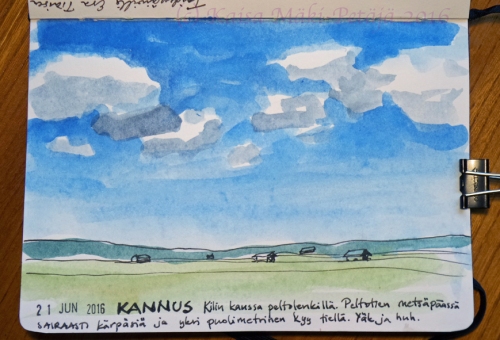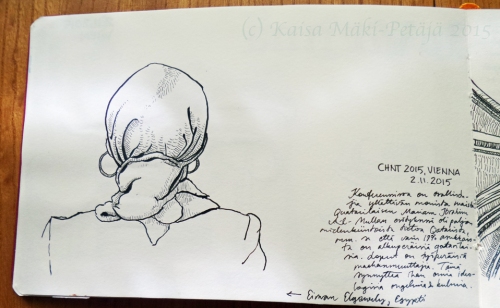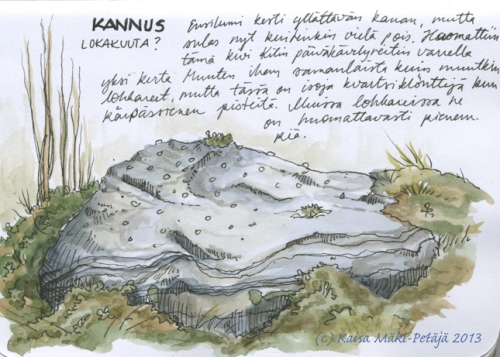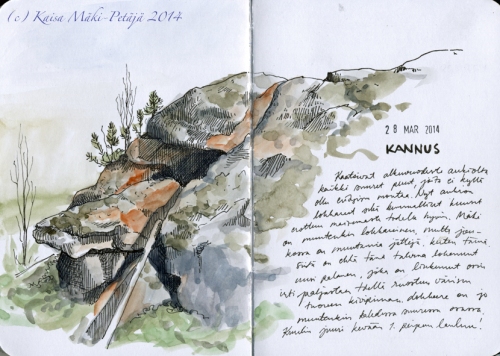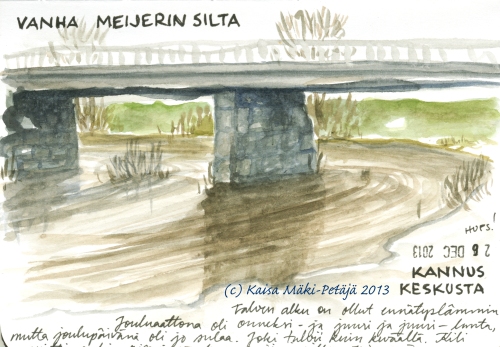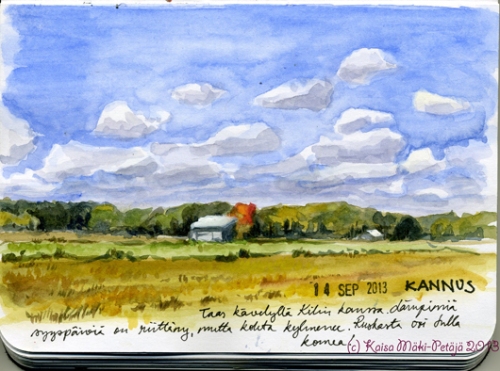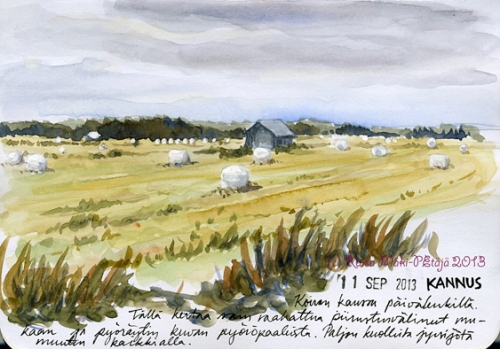I returned to Austria last November but this time with my hubby. We first visited our friends in Graz and climbed our very first mountain ever. That was so awesome! First of all, you need to keep in mind this is my home landscape:

Here in Keski-Pohjanmaa region anything over 2 meters above the sea level is considered a hill. Seriously. When my hubby first moved here I tried to explain where friend of mine was living. “It’s the red house right on the top of the Koutonen-hill,” I said. My hubby gave me a perplexed look. I offered a more detailed description and he replied: “Oh, I hadn’t realised there is a hill there.”
See what I mean?
So a mountain, even a small one, is a Big Thing in my books.

Even the relatively gentle slopes around Graz are impressive in my eyes.
The mountain we tackled was the Schöckl. It’s not that high as far as mountains go, but a mountain nevertheless. Our initial plan was to take the cable car up but it happened to be closed for an inspection that day – which we discovered only after we got there. That put a slight strain on our timetable but we still decided to climb up. We took a path that circled around the peak, a route our friends had not taken before even though they are regular visitors. The day was warm and sunny and the views were quite spectacular. It had rained the day before and there had already been a quite a bit of snow on the Schöckl but the warm Föhn-wind had melted it all away. In fact, the weather felt like springtime!

The northwards view about 2/3 up to the top.
It’s just mindbogglingly beautiful to look across the landscape from an elevated position. Things in the landscape seem both faraway and oddly within reach. I can understand why they have used the same perspective in classical Chinese landscape paintings. There is something both awe-inspiring and numinous in such a perspective. This is what the Aesthetics’ concept of Sublime was created for.
While perfectly sunny the weather on top was chilling to the bone because of the wind .

Not quite the highest point but who cares.
We had planned to have a picnic once we reached the peak but it was just too cold and we had to settle for a more shielded spot. Still, the prospect was magnificent, and while the wind certainly made us finish our meal quickly, the sun was also getting closer and closer to the horizon. We decided to get a more direct route down which also meant a more steep descent. We needed to hurry if we were to get past the steepest parts before sunset. It does get dark quite quickly – especially in comparison out lingering sunsets in Finland.
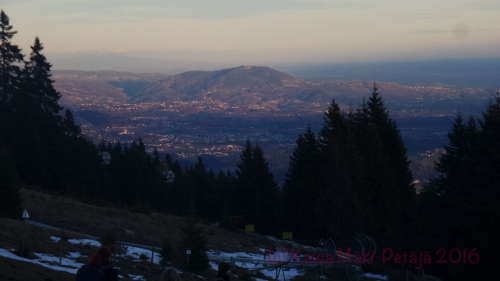
The southward side and views to the south-east.
Seeing the sun set from a mountain is one of the most spectacular sights. To watch how the blue, cold, and mysterious shadows creep across the landscape below you, and how the green landscape turns into a sea of blue hue with pinkish-orange islands of hills and smaller mountains. That’s when the air, the actual atmosphere itself becomes somehow more tangible. You can see and experience the vastness of the planet, that the space between things-of-the-world is not a void but a substance.
I can hardly wait for the next time.
